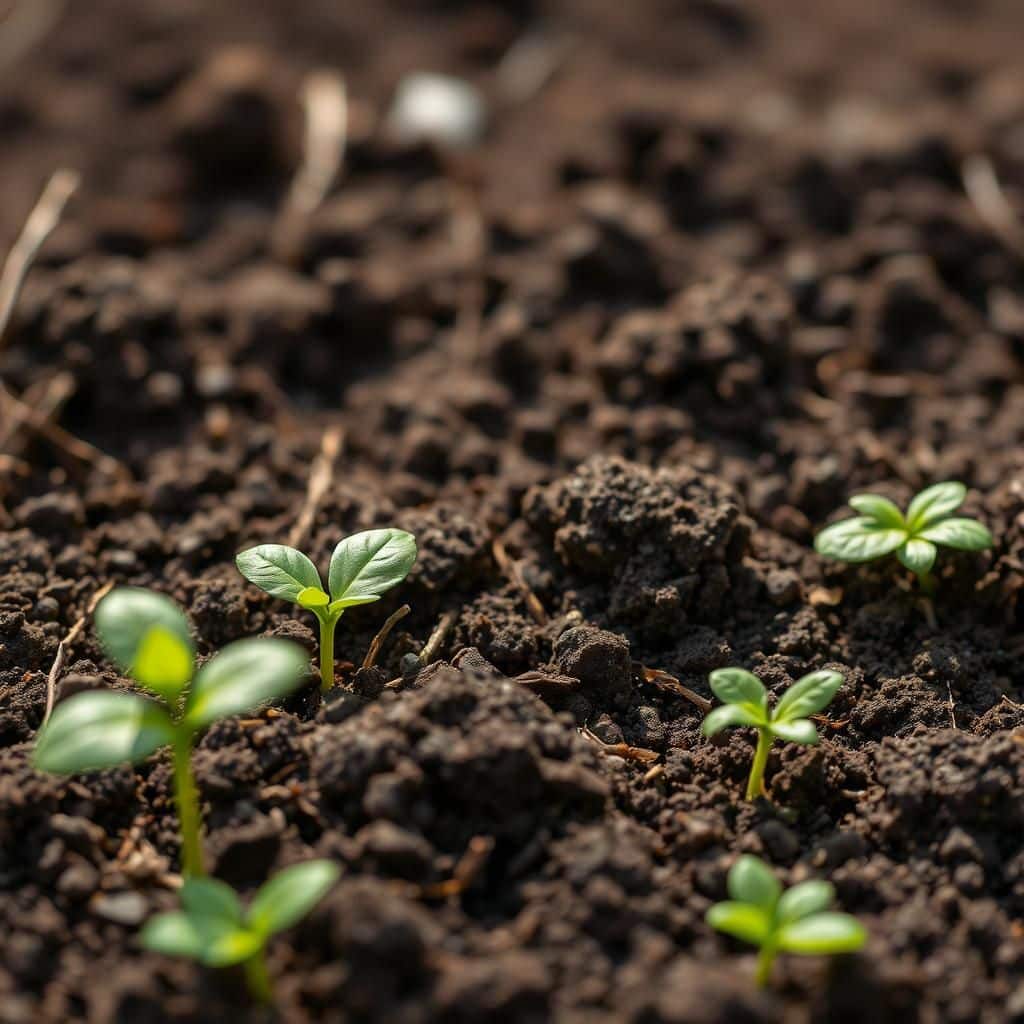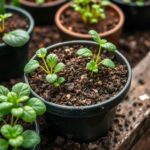Effective Strategies on How Do You Prevent Soil Erosion for a Healthier Environment

Soil erosion is a significant environmental challenge that threatens biodiversity, agriculture, and natural ecosystems. With increasing climate variability and human activity, the loss of topsoil has become a pressing issue. Understanding effective strategies to prevent soil erosion is essential for maintaining soil health and promoting sustainable land use practices. This article explores practical approaches to minimize soil erosion, including vegetation management, contour farming, and the use of erosion control methods. By implementing these strategies, individuals and communities can protect their land, enhance environmental quality, and contribute to a healthier planet for future generations.
Effective Strategies to Prevent Soil Erosion
Soil erosion can significantly impact the environment, agriculture, and water quality, making it crucial to implement effective prevention strategies. One of the most effective measures is the establishment of vegetative cover, as plants and their roots help bind the soil together, reducing the impacts of wind and rain. Additionally, combining practices such as terracing, contour farming, and maintaining ground cover with mulch or cover crops can effectively slow down water runoff and promote infiltration, thus minimizing soil loss. The careful use of these strategies not only conserves topsoil but also enhances the overall health of the ecosystem.
Planting Vegetation
Planting vegetation is one of the most effective methods to prevent soil erosion. By establishing a root system, plants can help anchor the soil and prevent it from being washed or blown away. Native plants, in particular, are well adapted to local conditions, making them resilient and effective in stabilizing soil. Additionally, creating a diverse garden or forest area can enhance biodiversity, which in turn supports a healthier environment and better erosion control.
Contour Farming
Contour farming involves plowing and planting across the slope of the land, rather than up and down. This method creates natural barriers that slow the flow of water during rainstorms, allowing it to soak into the ground rather than rushing downhill and taking soil with it. Implementing contour farming can significantly reduce soil loss and is especially effective in hilly or sloped areas where erosion is a primary concern.
Creating Terraces
Terracing is a technique that transforms steep terrain into a series of flat steps or ledges. This method reduces the length of the slope and minimizes water runoff, which can carry away soil. Terraces help to create flat areas for farming and can increase the amount of arable land while also providing effective erosion control. This is particularly useful in areas prone to heavy rains that can easily erode soil on steep slopes.
Using Mulch and Ground Cover
Applying mulch or establishing a ground cover can provide a protective layer that shields the soil from the impact of raindrops, which can easily displace soil particles. Mulch helps retain soil moisture, improve soil structure, and suppress weed growth, which can further enhance soil health. Additionally, ground covers like clover or grass can prevent erosion by maintaining a protective layer on the soil surface.
See also:
Implementing Erosion Control Fabrics
Using erosion control fabrics or mats is another method to combat soil erosion. These biodegradable materials provide instant stability to new landscapes, especially on sloped areas that are vulnerable to erosion. They help protect seedlings and promote vegetative growth, while simultaneously preventing soil movement due to wind or water. As these fabrics decompose, they enrich the soil, making it beneficial for plant growth over time.
| Prevention Method | Benefits |
|---|---|
| Vegetation | Anchors soil, enhances biodiversity |
| Contour Farming | Reduces runoff, conserves water |
| Terracing | Creates flat areas, minimizes erosion |
| Mulch and Ground Cover | Protects soil, retains moisture |
| Erosion Control Fabrics | Stabilizes soil, promotes growth |
How can we prevent soil erosion?
To prevent soil erosion effectively, various practices can be implemented that focus on maintaining soil health, reducing runoff, and enhancing vegetation cover. Here are several methods to mitigate soil erosion:
1. Vegetative Cover
Increasing vegetative cover is one of the most effective ways to prevent soil erosion. Vegetation acts as a barrier to wind and water, reducing their force on the soil surface.
- Grasses and shrubs: Planting deep-rooted grasses and shrubs helps bind the soil, protecting it from erosion.
- Cover crops: Utilizing cover crops during off-seasons can prevent soil from becoming bare and vulnerable to erosion.
- Trees: Establishing tree lines or forest patches can significantly reduce the impact of raindrops hitting the soil surface.
2. Soil Management Practices
Implementing effective soil management practices can greatly contribute to soil stability and health.
- No-till farming: This method minimizes soil disturbance, allowing native flora and fauna to thrive while keeping soil structure intact.
- Crop rotation: Changing crop types regularly helps maintain soil fertility and structure, reducing erosion risks.
- Organic matter addition: Adding compost and other organic materials enhances soil structure and increases its water retention capabilities.
3. Terracing and Contour Farming
Terracing and contour farming are two techniques that involve shaping the land to follow its contour lines, which helps slow down water runoff.
See also:
- Terraces: This involves constructing flat platforms on sloped terrain, which reduces speed and volume of water runoff.
- Contour plowing: Plowing along the contour lines of the land helps to create natural barriers and reduces soil displacement.
- Bench terraces: More sophisticated than standard terraces, bench terraces create levels on steep slopes that can absorb runoff and prevent erosion.
4. Erosion Control Structures
Implementing erosion control structures can provide immediate protection against erosion, especially in vulnerable areas.
- Retaining walls: These structures can hold back soil and prevent it from sliding down slopes.
- Check dams: Small dams made of stones, logs, or other materials can help slow water flow and trap sediment.
- Silt fences: These barriers are effective in trapping sediment and preventing it from washing away in stormwater runoff.
5. Community Awareness and Education
Raising community awareness and providing education on soil erosion prevention is crucial for long-term sustainability.
- Workshops and seminars: Organizing events to educate farmers and landowners about best practices for soil management.
- Promoting laws and regulations: Implementing local regulations that support sustainable land use and protect vulnerable areas.
- Community involvement: Encouraging local groups to participate in reforestation and soil conservation projects can enhance collective efforts against erosion.
Questions from Our Readers
What are some effective methods to prevent soil erosion?
To prevent soil erosion, you can implement several effective methods such as planting vegetation, using cover crops, building terraces, and applying mulch. These techniques help to stabilize the soil, reduce water runoff, and enhance moisture retention, which can all significantly reduce erosion.
How does vegetation help prevent soil erosion?
Vegetation plays a crucial role in preventing soil erosion by creating a root system that binds the soil together. The leaves and stems also act as a barrier, reducing the impact of rainfall and wind on the soil surface, which in turn minimizes surface runoff and soil displacement.
Can agricultural practices reduce soil erosion?
Yes, adopting sustainable agricultural practices such as crop rotation, no-till farming, and maintaining soil cover can greatly reduce soil erosion. These practices enhance soil structure and fertility, making the soil more resistant to erosive forces and helping to maintain its integrity over time.
What role does mulching play in soil erosion prevention?
Mulching is an effective technique that involves covering the soil with organic or inorganic materials. This practice not only protects the soil from direct rainfall impact but also helps to retain moisture, suppress weeds, and improve soil health, thereby significantly reducing the likelihood of soil erosion.
See also:

If you want to read more articles like Effective Strategies on How Do You Prevent Soil Erosion for a Healthier Environment, we recommend you check out our Soil category.
Leave a Reply

Related Articles